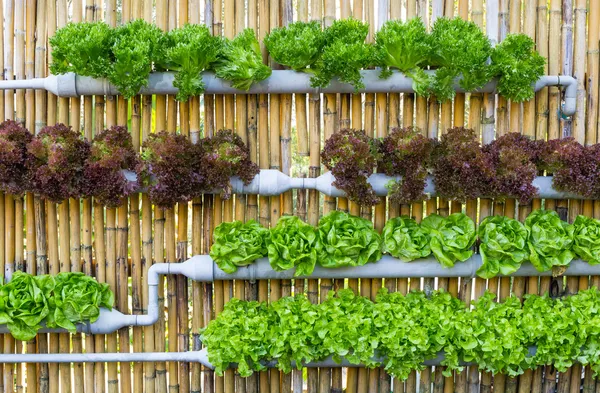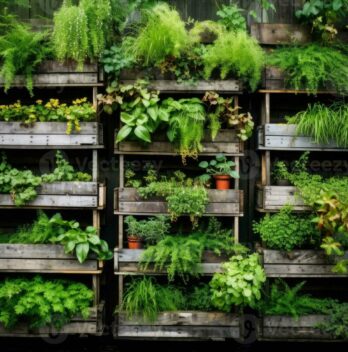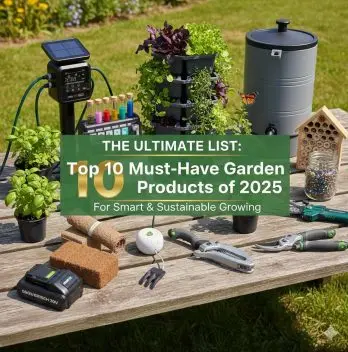As someone who’s optimized cloud infrastructures and online gaming platforms, I’ve discovered that the same principles of efficiency apply brilliantly to gardening. Vertical gardening isn’t just a trend – it’s a strategic approach to maximizing limited space, much like designing a scalable software architecture.
The Architecture of Green Spaces
Imagine your garden as a complex system where every square inch matters. In Switzerland, where space can be as premium as our precision watches, vertical gardening has become more than a hobby – it’s a necessity.
Why Vertical Gardening Matters
Just like in tech, gardening is about intelligent design when considering Vertical Gardening:
- Space Optimization: Reduce physical footprint by 60-70%
- Resource Efficiency: Maximize sunlight and water distribution
- Scalability: Expand growing capacity without additional ground space

Deployment Strategies for Urban Gardeners
Drawing from my experience in system design, here are implementation approaches that mirror software development principles:
- Trellis Frameworks
Think of trellises as the structure for your plant ecosystem. They provide structural support for climbing vegetables like:
- Pole beans
- Cucumbers
- Tomatoes
- Peas
- Modular Planter Systems
Similar to containerized applications, these units can be:
- Independently managed
- Easily reconfigured
- Scaled up or down based on requirements
- Hydroponic Vertical Setups
The cloud computing of gardening – distributed, efficient, and remarkably scalable. Perfect for urban environments with limitedsoil access.
Hydroponic Growing Kit with Pump, Air Stone and Water Leveling Device for Indoor/Outdoor Leafy Ve…
- Efficient Growth: Ideal for indoor/outdoor leafy vegetables with fast, consistent growth.
- Recirculating System: Maintains water and nutrient levels, reducing waste.
- Complete Kit: Includes pump, air stone, and water leveling device, so no extra purchases needed.
- Large Capacity: 7 buckets, each 5 gallons, offering a significant growing area.
- Setup Complexity: Some users may find initial assembly challenging.
- Space Requirement: Requires a larger space due to its size
Technology Meets Horticulture
Pro tip from someone who’s deployed systems globally: technology can dramatically enhance your vertical gardening experience.
Smart Gardening Tools
- Moisture sensors to track plant hydration
- Automated irrigation systems
- LED grow lights for indoor vertical gardens
- Mobile apps for plant health tracking
ECOWITT WH0291 Soil Moisture Meter: measures soil moisture content within 72 seconds to let you know when to water your plant
Swiss-Inspired Precision
Living in Switzerland has taught me that precision matters – whether you’re designing a software system or a garden. My approach combines meticulous planning with adaptable execution.
Recommended Plant Selection
- Herbs: Basil, mint, thyme
- Leafy Greens: Lettuce, spinach
- Compact Vegetables: Cherry tomatoes, peppers
Potential Challenges and Mitigation
Like any tech deployment, vertical gardens require strategic planning:
- Lighting Considerations
- Analyze sunlight exposure
- Use reflective surfaces to maximize light
- Implement supplemental grow lights if needed
- Water Management
- Install drip irrigation systems
- Use self-watering planters
- Monitor moisture levels consistently
- Structural Integrity
- Ensure mounting surfaces can handle weight
- Use lightweight growing mediums
- Distribute plant weight evenly
Personal Deployment Recommendations
From my mountain biking adventures to my online gaming experience, I’ve learned that success comes from:
- Starting small
- Iterating quickly
- Embracing continuous learning
Final Thoughts
Vertical gardening isn’t just about growing plants – it’s about reimagining space, embracing technology, and creating sustainable ecosystems in compact environments.
Pro Tip: Treat your vertical garden like a tech project. Plan, experiment, optimize, and most importantly – have fun with the process.
Stop reading. Start growing your vertical garden.
Vertical Gardening FAQ: Your Top Questions Answered
- What is vertical gardening?
Vertical gardening is a space-efficient gardening technique that involves growing plants vertically using suspended panels, trellises, or specialized structures, maximizing limited space by utilizing upward growth instead of traditional horizontal planting12. - What types of plants work best in vertical gardens?
Ideal plants for vertical gardens include:
- Climbing vegetables: Tomatoes, cucumbers, squash
- Herbs: Basil, mint, thyme
- Leafy greens: Lettuce, spinach
- Compact fruiting plants: Strawberries, small peppers12
- How much does a vertical garden cost to set up?
Vertical garden setups can range from budget-friendly DIY options like recycled pallets (potentially free) to more sophisticated systems costing around $150. Costs vary based on complexity and materials used45. - Do vertical gardens require special maintenance?
Vertical gardens need:
- More frequent fertilization
- Careful monitoring of water drainage
- Regular checking of support structures
- Occasional repositioning for optimal sunlight exposure2
- Can vertical gardens be created in small apartments or urban spaces?
Absolutely! Vertical gardens are perfect for:
- Balconies
- Patios
- Indoor walls
- Small terraces
- Even windowsills
They’re an excellent solution for urban dwellers with limited gardening space34.Pro Tip: Start small, experiment, and don’t be afraid to get creative with your vertical gardening approach!

Brian believes the best days are spent outside with soil on your hands. He finds his rhythm in the details of the garden—from carefully tending to established plants to the excitement of propagating new varieties. A true outdoor enthusiast, Brian is here to swap stories, share advice, and celebrate the rewarding work of growing.






